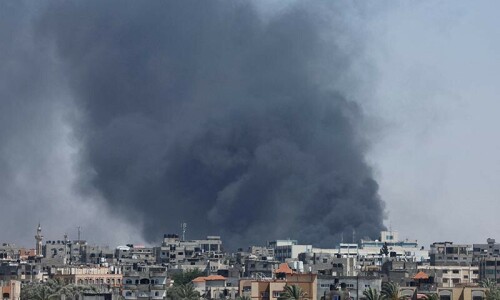ISTANBUL: A 34-year-old Uzbek man suspected of slaughtering 39 people at an Istanbul nightclub on New Year’s Eve confessed to the massacre on Tuesday, hours after his capture in a police raid.
Authorities detained Abdulgadir Masharipov, who spent 17 days on the run after the attack claimed by the IS, along with three women and an Iraqi man during a massive police operation in Istanbul.
“The terrorist confessed his crime,” Istanbul governor Vasip Sahin told reporters. He said the fingerprints matched those of the attacker and confirmed he is an Uzbek national. “He was trained in Afghanistan and can speak four languages. He’s a well-trained terrorist,” added the governor, saying Masharipov is believed to have first entered Turkey in January 2016.
Police also confiscated 197,000 US dollars, two firearms and clips during the raid on an apartment, he added.
President Recep Tayyip Erdogan hailed the arrest and congratulated the security forces. “From now on in this country, nobody will get away with what they have done,” he said in a speech in Ankara. “Everyone will be brought to account within the rule of law.”
The operation to find the whereabouts and capture the suspect involved some 2,000 police officers, the Istanbul governor said.
The suspect had apparently slipped into the night following the attack on the glamorous Reina nightclub on the Bosphorus, as police tightened borders to prevent him escaping. But he was hiding in the working-class, densely populated western districts of Istanbul. Days of police tracking eventually traced him to an apartment in the residential Esenyurt district.
Police allowed reporters into the apartment, which had been thrown upside down during the 20 minute raid to apprehend the suspected extremist.
Drawers were flung open and clothes thrown onto the floor. But there were also tantalising glimpses of daily life like handwritten notes and a half-eaten loaf of bread.
Capturing the suspect alive will be seen as a major victory for the Turkish security forces and he may be able to shed light on the existence of other IS cells in the city.
‘Tracked for 3 days’
There had been confusion over the attacker’s identity in the wake of the massacre, with reports initially suggesting a Kyrgyz national and then a Uighur from China was responsible.
But authorities later identified him as a 34-year-old Uzbek who was part of a Central Asian IS cell using the code name Ebu Muhammed Horasani.
Images released by police during the manhunt were taken from a chilling silent video he purportedly took on Istanbul’s Taksim Square with a selfie stick, before carrying out the carnage.
According to NTV television, the police had spotted his location three days earlier, but preferred to track him to identify his contacts.
The investigation had also focused on the central Turkish city of Konya where the attacker was reported to have lived for several weeks after returning from Syria before moving to Istanbul.
A total of 50 people have now been detained in the investigation as a result of 152 raids since the attack, Sahin said.
Published in Dawn January 18th, 2017














































Dear visitor, the comments section is undergoing an overhaul and will return soon.